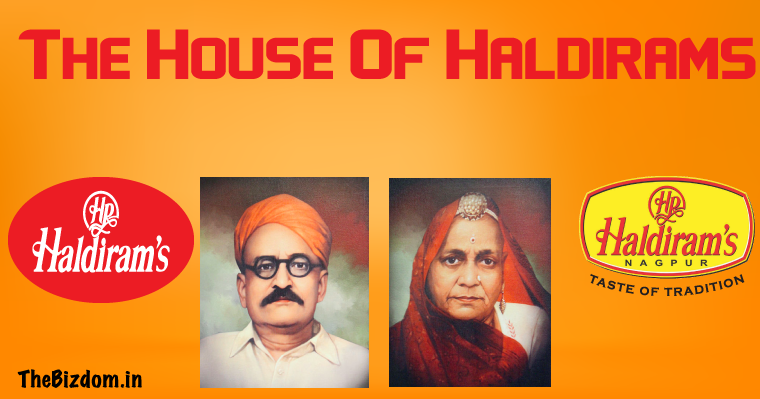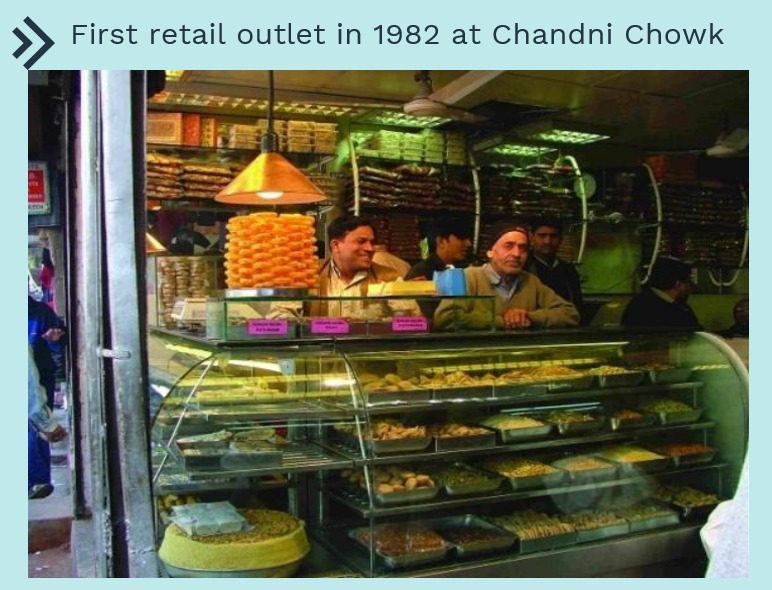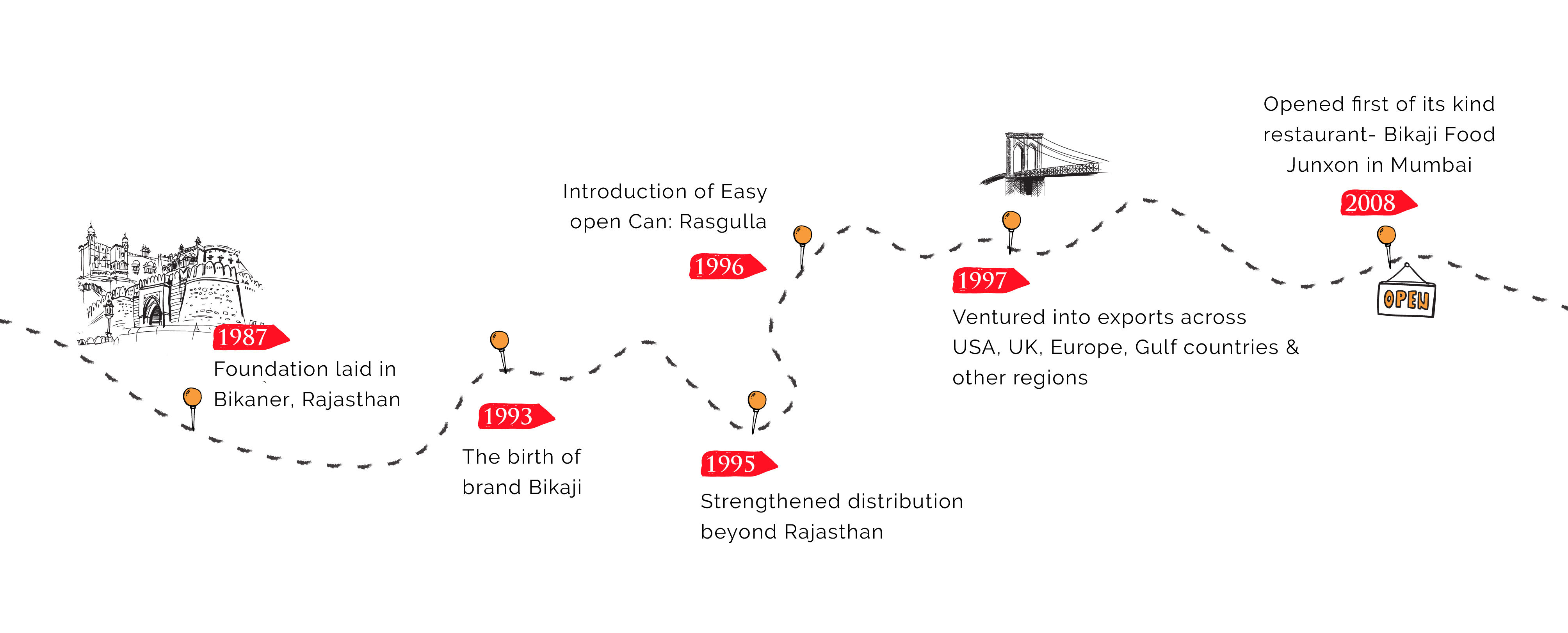8 min to read
Haldiram: Their Men and Women
Haldiram: From Bikaner to Everywhere

It’s funny that I first heard of the name Haldiram, while watching my then action hero’s movie Arjun Pandit. This 1999 movie will have Haldiram (Ashish Vidyarthi), a hideous criminal who runs a powerful gang. Well-Well all this got changed as by 2007, I started dating my wife and given that both of us were budding business quizzers. A lot of talk was around the growth of some desi brands. She been Marwadi, started telling me many tales, and one of such amazing kissa was about the House of Haldiram.
Origin
Bikanerwala
Bikaner was growing as a business city as it was in-route to the important trade route through to the ports of Gujarat, toward Delhi. The business community was also growing, so was the need for the quick, healthy and cheap snacks.
Many little hole-in-the-wall shops started selling samosas and kachoris and a freshly fried bhujia. Dungar Singh (1872–87), was a forward-looking maharaja for those times, and was known for his desire for a modern administration. He was the first Indian king to introduce a police force, establish the state’s first hospital, and it was he who ensured that Bikaner was the first Indian princely state to introduce electricity in 1886. Around 1885, it was during the reign of Maharaja Dungar Singh, that the first batch of bhujia was made in Bikaner, hence you will find ‘Dungar sev’ as a name.
Bhikharam Agarwal
He was a son of Tansukhdas Agarwal, a poor and just another snack seller living in the Bachaut Ka Mohalla area in Bikaner. He just somehow managed to live a decent life with his growing family and a normal going business.
Bikhi Bua
Bikhi was Bhikharam’s sister, and has learned the art of making fat and firm form of bhujia from her Mother-in-law. She used to visit Bikaner during festivals and on kids demand she used to make the same. And, assisting her was a young Ganga Bhishen Agarwal, aka Haldiram. He will understand this art from her bua, unfortunately not much is known about her family. Somewhere between 1908 and 1918, Bhikharam, realizing the potential of this bhujia, he began making larger quantities of ‘fat bhujia’ to sell at his shop in Bhujia Bazaar. As they says “Keep your focus on customers and you’ll go a long way.”
Haldiram & Champa Devi
Making of the bhujia was mainly done by Haldiram only and he kept on improving the process. The initial sales were for a few measly paise per kilo. The bhujia was spooned into small paper funnels made from old newspapers. But living with peace in such a large family staying in a tiny home was difficult. Soon, crack in the family got started. A tipping point will come when Champa Devi (Haldiram’s wife) refuses to live in the same house and demands him to separate. Haldiram, was forced to leave his joint family.
On his own
By 1944, at age 36, Haldiram and Champa Devi with three sons, daughters-in-law and a three-year-old grandson, were on their own. They struggled for a while until Haldiram released another masterpiece snack. Champa Devi was an expert in cooking moong dal. Haldiram applied his usual understanding of customer tastes and took to the streets armed with his wife’s special.
Local workers in the area were always on the lookout for a cheap, delicious meal during their workday, and Champa Devi’s moong dal was an instant hit with them. Healthy and hot, it served as the perfect meal for the working labour class. Innovation at time is also about the process of creating efficiency. So they keep improving their acts in the comings days.
The Calcutta Calling
In the 1950s, Haldiram went to Calcutta for his friend’s son’s wedding, and was asked to make bhujia for all the wedding guests. While many had already heard of Haldiram fame. This is the first time Marwadi of Calcutta will taste this.
Haldiram will soon ask his second son (Rameshwarlal) to look for a shop and start the operation in Kolkata. In 1967, the shop in Calcutta was doing better than anybody had ever hoped (all thanks to the growth of the Marwadi community. who were growing in power and money). The profits were higher than what they had in Bikaner.
Saraswati Devi
Moolchand (Halidiram’s eldest son) was now controlling and growing the business. This is when her daughter demanded some business for her. After a lot of discussion and debate, it was agreed that She along with her husband can go to Nagpur and set up a shop there. Saraswati has also learned the art of making these snacks, but they lacked the art of selling and managing the business. As the business was failing Moolchand asked his elder son, Shiv Kishan to shift there and run the show in 1968.
The House of Haldiram
Your product is the outcome of a series of steps you take. The end result is what you are selling. By 1968, the three sons of Halidram were managing the business in Bikaner and Calcutta. While, Moolchand didn’t play much active role in expanding the business his four sons will do, esp Shiv Kishan. Two of his biggest moves were: (a) Kaju Katli. It was prepared by thickening milk with sugar, dry fruits, mainly cashew nuts, and saffron. (b) Getting into the restaurant business Around, the same time the growing Calcutta business will trigger the two sons of Haldiram who broke their business and get separated from the Moolchand’s family. Rameshwarlal set up with Haldiram Bhujiawala in Kolkata and Satyanarayan managing a tiny piece of the business in the name of Haldiram & Sons.
Manoharlal Agarwal
If Shiv Kishan was the man of execution, Manoharlal was the man of branding. While Halidiram had differentiated the product and given it a recall value, by calling it under its name. But what about the packing? In the ’70s, packaging had evolved from bhujia being served in a rolled-up newspaper cone to bhujia being packed in a low-quality plastic bag. They would pour Bhujia in through the open end and they would seal the packet with a few staples. This is when Manoharlal will push for the plastic bag to be ‘branded’. They started using letterpress, with the “Haldiram Bhujiawala” brand name.
Delhi
 Having successfully grown a business in Nagpur, Shiv Kishan was now impatient to move to the Desh ki Rajdhani. He will ask his brother (Manoharlal) to visit and look for the shop, assuring him of the starting capital.
They inaugurated their first shop in Delhi at Chandni Chowk in February 1983. When Manoharlal arrived there in the latter half of 1982, Chandni Chowk was known for famous snack shops like Ghantewala, Kanwarlalji, Chainaram Sindhi, as well as Bikanervala. This is for the first time they will face so much competition.
Then in 1991, the Delhi unit abandoned the traditional brand name of Haldiram Bhujiawala and rebranded to Haldiram’s, as we know them today.
Having successfully grown a business in Nagpur, Shiv Kishan was now impatient to move to the Desh ki Rajdhani. He will ask his brother (Manoharlal) to visit and look for the shop, assuring him of the starting capital.
They inaugurated their first shop in Delhi at Chandni Chowk in February 1983. When Manoharlal arrived there in the latter half of 1982, Chandni Chowk was known for famous snack shops like Ghantewala, Kanwarlalji, Chainaram Sindhi, as well as Bikanervala. This is for the first time they will face so much competition.
Then in 1991, the Delhi unit abandoned the traditional brand name of Haldiram Bhujiawala and rebranded to Haldiram’s, as we know them today.
The art of Packaging
Haldiram was among the first desi company in India to introduce branded namkeen in flexible packaging in 1990. They will soon do many more innovations like: Four layer structure flexible packaging film for namkeen to give shelf life of 6 month Packaging of syrups in glass bottles to give the shelf life of 9 month Zip pouch in bigger namkeen pack for consumer convenience
Such packaging would revolutionize the product shelf life and freshness from 6 days to 6 month which is the biggest reason for the growth of their traditional snacks.
Shiv Ratan Agarwal
 Shiv Ratan Agarwal, Moolchand’s second son and Shiv Kishan’s younger brother would continue to grow the business from Bikaner and would soon set up Bikaji (derived from Bika Rao- the founder of Bikaner) in 1987.
Shiv Ratan Agarwal, Moolchand’s second son and Shiv Kishan’s younger brother would continue to grow the business from Bikaner and would soon set up Bikaji (derived from Bika Rao- the founder of Bikaner) in 1987.
Today
While legal fight is still on between the Calcutta and Delhi division about the ownership of the Brand. The different divisions have their own rise and fall.
Haldiram Delhi Group will see the biggest growth in the recent past and will opt for an aggressive organic growth. FY2016, they acquired Indore-based Aakash Namkeen followed by acquisition of controlling stake stakes in regional players like Babaji Snacks, Pragati Snacks, Ankita Agro and Food Processing and Atop Food Products. Nagpur business is also growing at a fast pace. While Calcutta is struggling with their own problems. All starting from Prabhu Shankar Agarwal and recent death of Mahesh Agarwal.
End Note: The story of bhujia definitely predates Haldiram, though its alleged original founder never enjoyed even a tenth of Haldiram’s fame and fortune.
What to read more? Read Pavitra Kumar. “Bhujia Barons: The Untold Story of How Haldiram Built a Rs 5000-crore Empire”.



